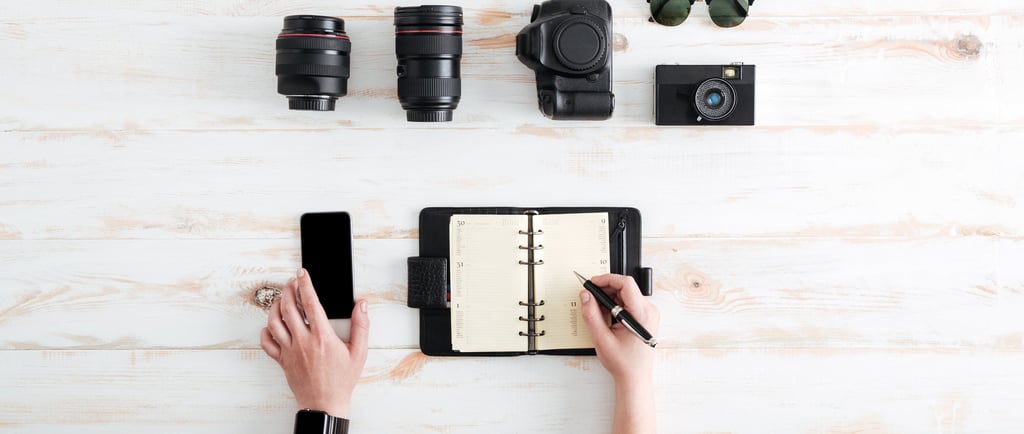
How to Make the Perfect Shooting List for Video Production
The Ultimate Guide to Crafting the Perfect Shooting List for Video Production
FEATURED ON HOMEPAGE
Linin
7/4/20243 min read


How to Make the Perfect Shooting List for Video Production
1. Start with a Clear Concept
Before building a shooting list, understand the vision for the video. Whether it’s a commercial, documentary, or narrative film, the concept dictates everything. Clarify the tone, style, and objective, then list the types of shots and angles needed to deliver the message effectively.
Tips:
Have a creative brief handy to keep the vision clear.
Collaborate with key team members (director, producer) to ensure everyone is aligned.
2. Scouting: Know the Location
Location scouting is crucial for a comprehensive shooting list. Visit each location to understand the lighting, space, and possible shot angles. Take notes and pictures to reference later.
Tricks:
Bring a camera to take test shots.
Take note of natural lighting and how it changes throughout the day.
Check for any environmental sounds or issues that may affect the shoot.
3. Break Down the Script or Concept
The next step is to break down the script (if available) or storyboard to define every shot. Identify what needs to be captured in each scene and the type of shots needed (wide, medium, close-up).
Tips:
Number the shots based on the script.
Highlight important moments in the script that need special focus (key dialogues, emotional expressions, etc.).
4. Organize by Location and Scene
Once you have the list of shots, organize them by location and scene. This will streamline the production schedule, minimize location moves, and save time.
Tricks:
Group similar shots (e.g., all wide shots) together to avoid frequent camera changes.
Include alternate shots for backup in case some don’t work out on production day.
5. Consider Shot Types and Angles
A variety of shots make your video visually interesting. Include wide, medium, and close-up shots for each scene. Incorporate creative angles that enhance storytelling, such as over-the-shoulder shots or tracking shots.
Tips:
Include notes on any specific lenses, lighting setups, or movements (like dolly or handheld).
Ensure you have coverage shots (wide shots capturing the full scene) to avoid missing crucial moments in the edit.
6. Add Special Effects and Post-Production Shots
If your video involves special effects or heavy post-production, make sure these are listed and accounted for in the shooting plan. This could include green screen shots, motion tracking, or shots that need special post-production attention.
Tricks:
Plan for extra time on these shots.
Make sure your crew is briefed on any technical needs for these specific shots.
7. Include Cutaways and B-Roll
Cutaways and B-roll are essential for smoothing transitions and adding depth to your video. B-roll can be location shots, close-ups of objects, or extra action shots that enhance the storytelling.
Tips:
Plan to shoot B-roll at every location to provide enough material during editing.
Don’t forget to capture ambient sound for a more immersive audio experience.
8. Account for Equipment and Crew Needs
Include a section in your shooting list for equipment requirements. Note specific cameras, lighting setups, microphones, and other gear for each shot. Also, list the crew needed for certain shots, such as lighting technicians, sound engineers, or makeup artists.
Tricks:
Use a shot list template that includes columns for gear and personnel needed for each shot.
Add reminders for battery checks, lens cleaning, or any other equipment maintenance required throughout the shoot.
9. Time Management: Create a Realistic Schedule
Set a timeline for each shot or scene, factoring in setup time, rehearsals, and possible delays. Overestimating time can keep you on track, while underestimating can create chaos.
Tips:
Block extra time for complex shots.
Have buffer time in case of any unexpected delays.
10. Prepare for Contingencies
Things can go wrong on shoot day—weather, equipment failure, or unplanned interruptions. Have contingency plans in place for these situations.
Tricks:
Always have backup equipment available.
If shooting outdoors, schedule indoor shots as a backup in case of bad weather.
11. Finalize and Review the List
Once your shooting list is complete, review it with your key team members. Get feedback from the director, cinematographer, and producer to make sure it aligns with their vision.
Tips:
Use digital tools or apps like Shot Lister or StudioBinder for easy sharing and updates.
Print physical copies for all key crew members, but also have a digital version available.
12. On the Production Day: Stick to the List but Stay Flexible
Finally, on production day, the shooting list is your bible. However, flexibility is key. If an idea strikes or something changes, be willing to adapt the list.
Tips:
Delegate someone on the crew to keep track of the shots completed and those still needed.
Trust your team’s input if they suggest adjustments to improve the flow of production.
